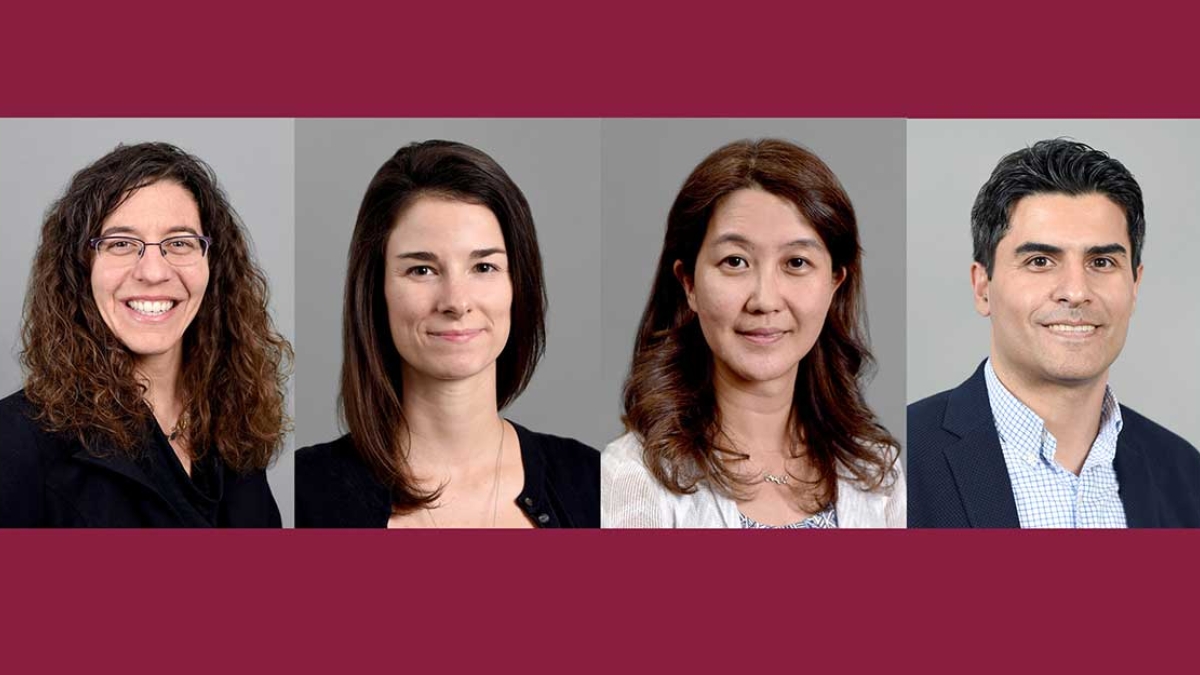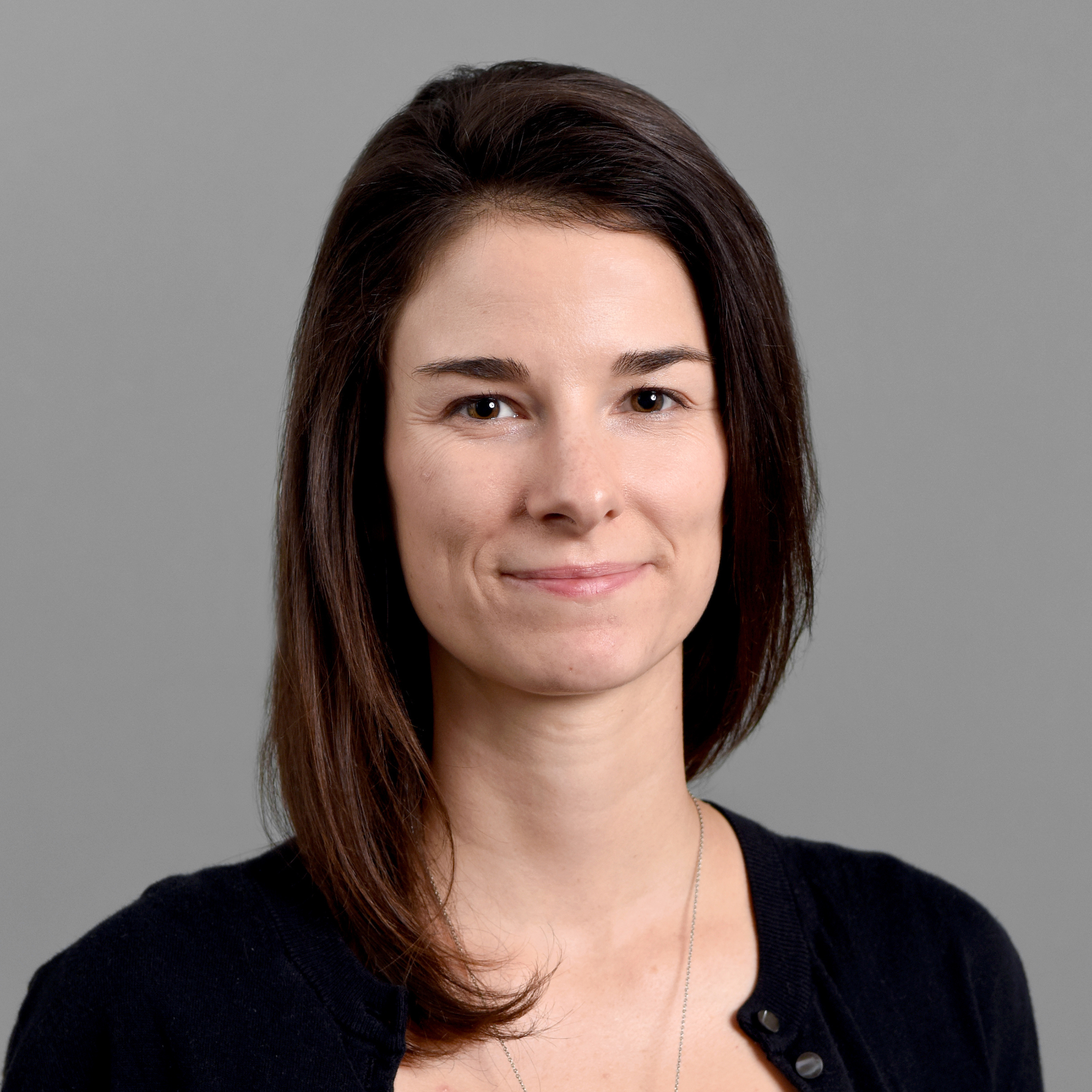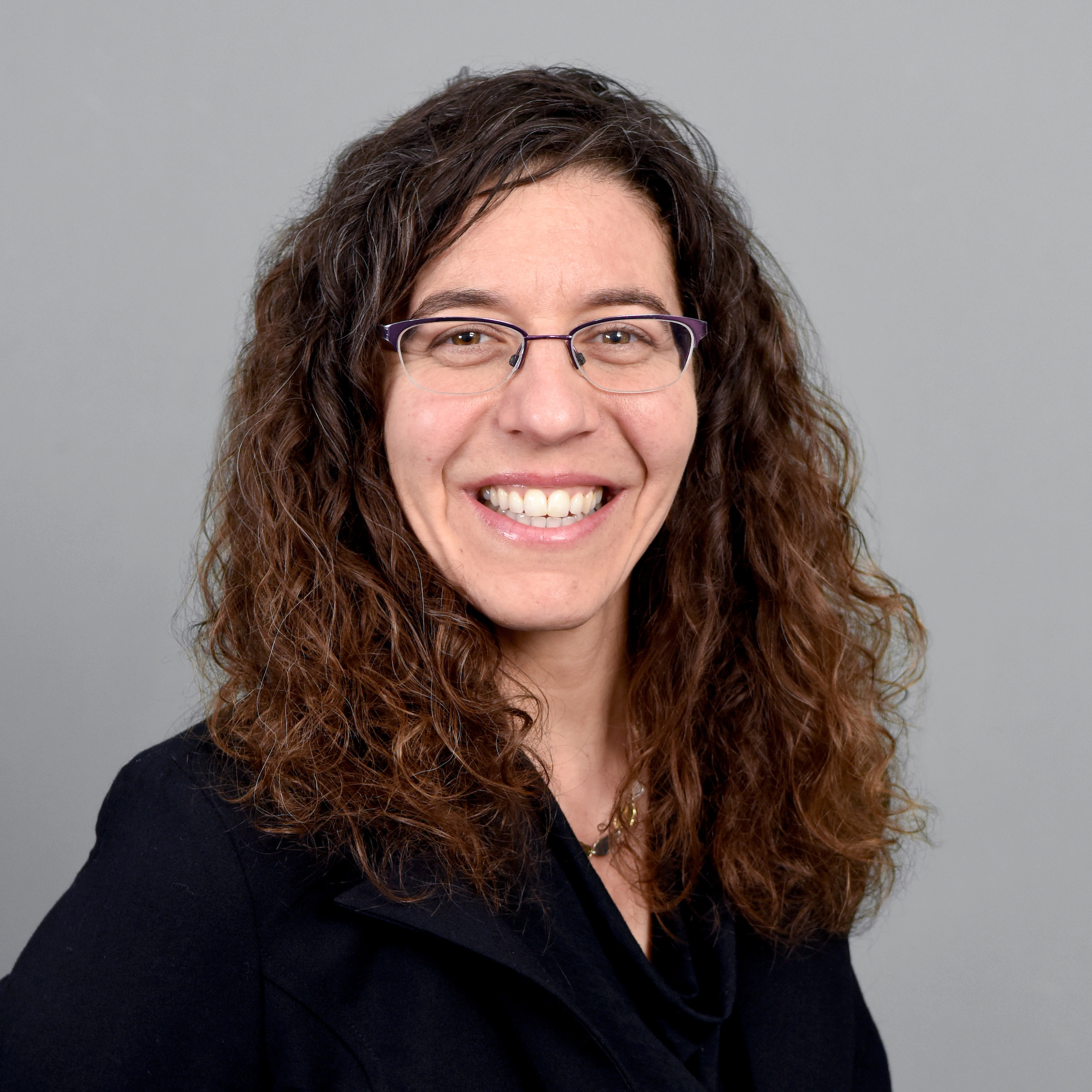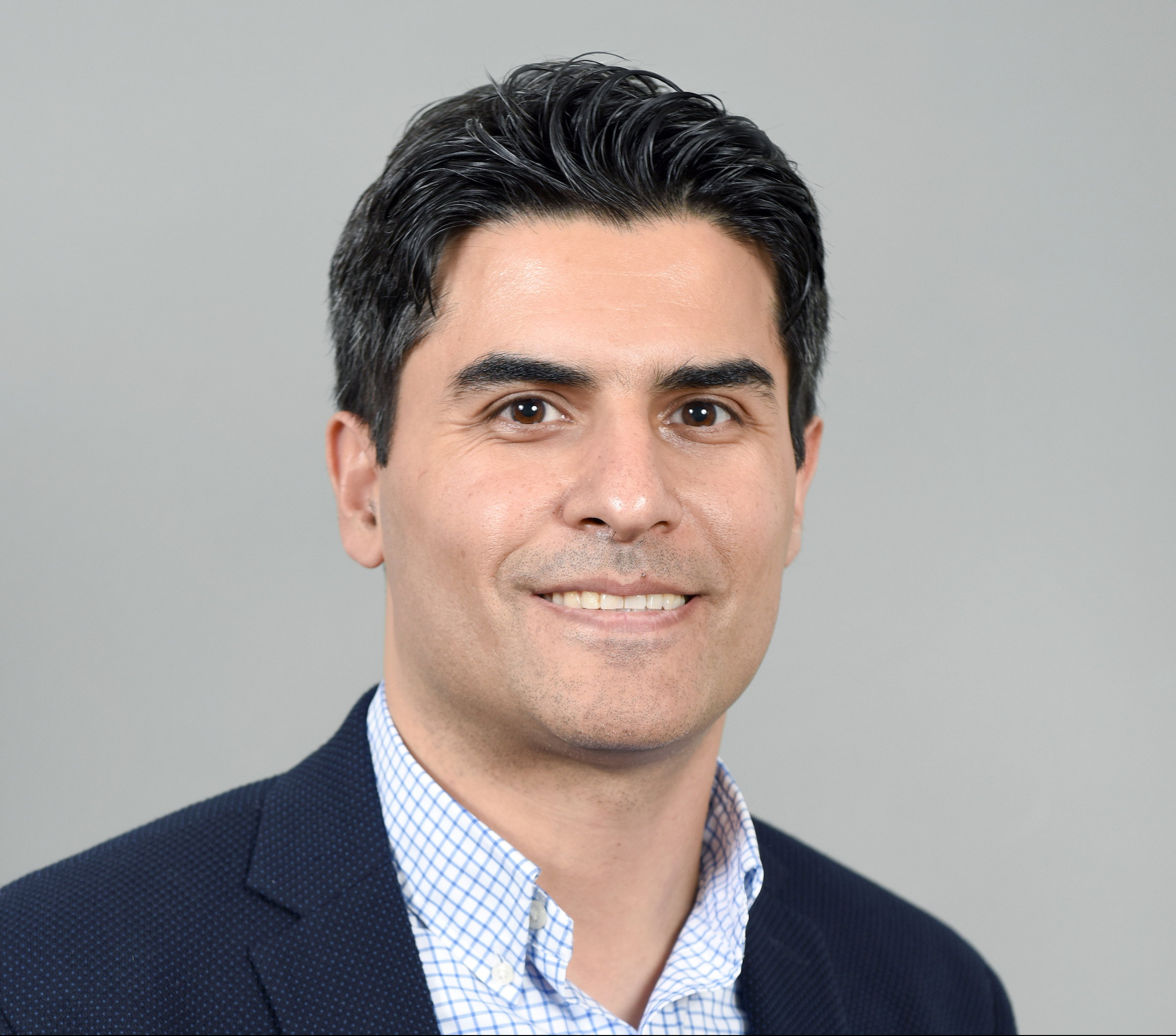New grants fuel ASU bioscience research

2019 Flinn Foundation grant winners. Left to right: Barbara Smith, Julianne Holloway, Li Liu, Mehdi Nikkhah
Four faculty members from Arizona State University received grants from the Flinn Foundation to further their bioscience research. The projects will work to develop a material that will help heal rotator cuff tears; create technology to map the brain’s cellular activity during opioid addiction; find genetic variants related to Type 2 diabetes in underrepresented populations; and nanoengineer cardiac tissue to fix damage caused by a heart attack.
The Flinn Foundation is a philanthropic organization that awards grants to nonprofit organizations to “improve the quality of life in Arizona to benefit future generations.”
Julianne Holloway received a 2019 Flinn Foundation Seed Grants to Promote Translational Research award through a program to identify projects that could address well-defined clinical needs. It helps scientists reach their next development milestones faster, enabling them to compete for new funding.
Mehdi Nikkhah, Li Liu and Barbara Smith each received a Flinn Foundation NIH Bridge-Funding Initiative award, part of a new program that supports scientists while they prepare to secure funding from the National Institutes of Health, especially for projects related to NIH High Priority or Challenge areas.
“A state that aims to outcompete its peers in National Institutes of Health funding needs mechanisms to help promising researchers cross the finish line,” said Mary O’Reilly, vice president of bioscience research programs at the Flinn Foundation.
NIH research project grants are extremely competitive, with an average of fewer than 1 in 4 applications getting funded. Researchers often apply multiple times before receiving an award.
“These researchers have each recently submitted a grant request to NIH, have had their proposals reviewed, but remain unfunded,” O’Reilly said. “The Flinn funds provide them with the opportunity to do necessary work to strengthen their proposals and prepare to resubmit.”

Assistant Professor Julianne Holloway
Shouldering the challenge of healing rotator cuffs
Injuries to the group of muscles and tendons covering the shoulder joint — known as the rotator cuff — are very common, but recovering from such an injury is a tricky matter. That’s because the body can’t regenerate a special type of tissue that transitions from rope-like, fibrous tissue to mineralized bone.
Holloway, an assistant professor in the School for Engineering of Matter, Transport and Energy, aims to solve this problem by engineering a new material that can mimic the natural gradients in that tissue and help guide its repair. This will require new manufacturing methods. She will develop a new technique for a fiber production method known as magnetically assisted electrospinning so that it can create independent, precise gradients in fiber alignment and mineralization.
The potential applications of this work extend beyond rotator cuff tears, and could also help heal ACL, meniscus and other fibrous tissue injuries.
Mehdi Nikkhah
A change of heart tissue
Heart attacks — which affect about 735,000 people in the U.S. every year — injure the heart muscle by restricting blood supply. As the muscle heals afterward, it develops scar tissue, which isn’t able to pump blood as well.
Nikkhah, an assistant professor in the School of Biological and Health Systems Engineering, seeks to engineer new heart tissue that can repair damaged muscle. His laboratory combines biomaterials, micro and nanoscale technologies, and biology to create regenerative medicine strategies that treat organ and tissue failure.
His project will involve single-cell nanoengineering to create biomimetic cardiac micro-tissue. He will also use in vitro tissue engineering strategies, as well as in vivo studies, to model diseased heart tissue and study how cells function in that environment.

Assistant Professor Li Liu
Detecting diabetes DNA
Over 30 million Americans have diabetes, and 90% to 95% of those cases are Type 2. According to the Centers for Disease Control and Prevention, this form of the disease is more prevalent among American Indians and Alaska Natives, non-Hispanic African Americans, and people of Hispanic ethnicity. However, less health and genetic data is available to represent these groups in scientific studies.
Liu, an assistant professor in the College of Health Solutions, will be working to create a new computational method that assesses the function of genetic variants that are tied to Type 2 diabetes. She then plans to use this method to search for genetic risk factors of the disease in underrepresented populations.
Working with researchers at Mayo Clinic, Liu will test if adding these factors to the usual suite of established risk factors will help doctors more accurately predict individuals’ diabetes risk as well as diabetes prevalence at the population level.

Assistant Professor Barbara Smith
Mapping the brain’s pathways
Current thought holds that drugs of abuse create addiction because they increase dopamine levels in the brain. This trains dopamine-releasing neurons to travel along a drug-reward pathway, creating a neurocircuit.
Smith, an assistant professor in the School of Biological and Health Systems Engineering, will work to build a powerful new tool that can examine cellular activity in the deep brain. The technology she proposes features a feedback system that uses light and sound — fluorescence and photoacoustics — to identify, target, stimulate, record and adjust that activity.
This tool would then allow her to investigate regions in the brain’s mesolimbic system, which is sometimes called the reward pathway, to explore the ways the brain adapts to addiction.
Her approach will have applications beyond addiction, helping researchers study neurological disorders and neurodegenerative diseases such as Alzheimer’s disease, traumatic brain injury, epilepsy and pain.
More Science and technology

Will this antibiotic work? ASU scientists develop rapid bacterial tests
Bacteria multiply at an astonishing rate, sometimes doubling in number in under four minutes. Imagine a doctor faced with a…

ASU researcher part of team discovering ways to fight drug-resistant bacteria
A new study published in the Science Advances journal featuring Arizona State University researchers has found…

ASU student researchers get early, hands-on experience in engineering research
Using computer science to aid endangered species reintroduction, enhance software engineering education and improve semiconductor…
